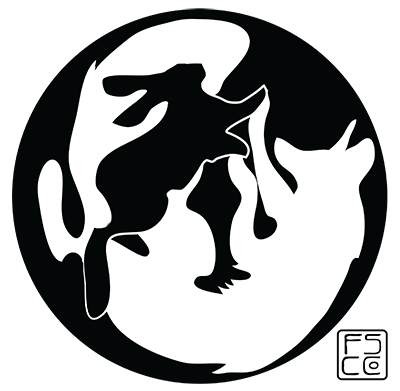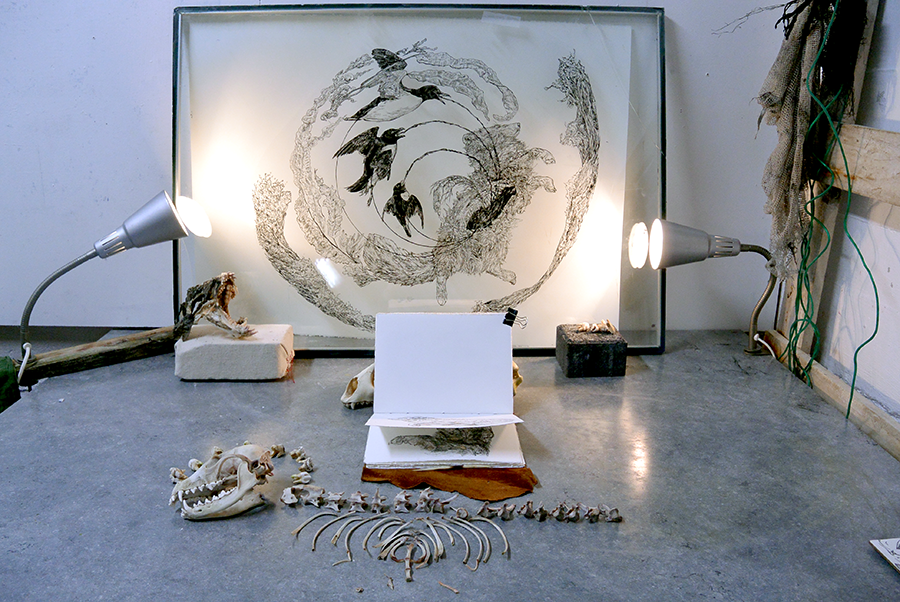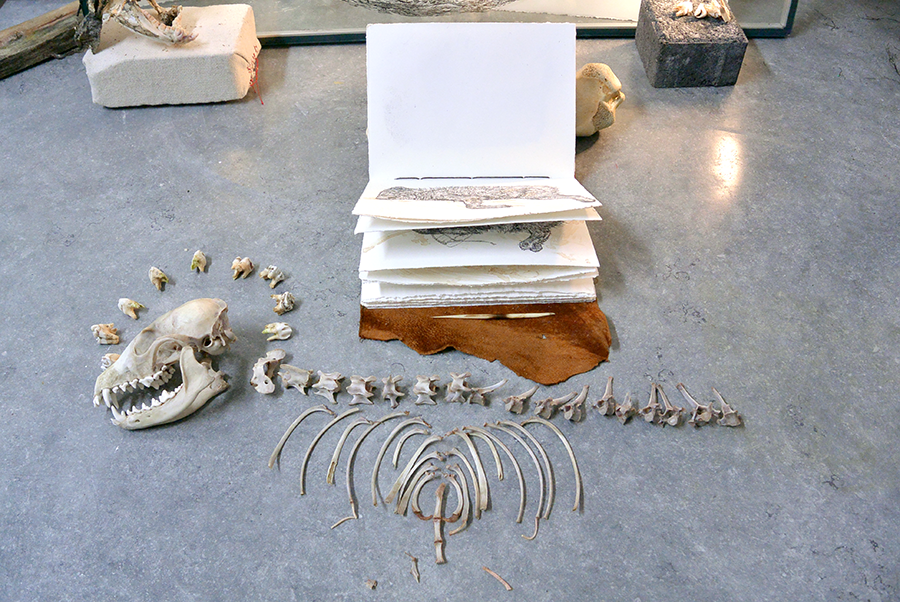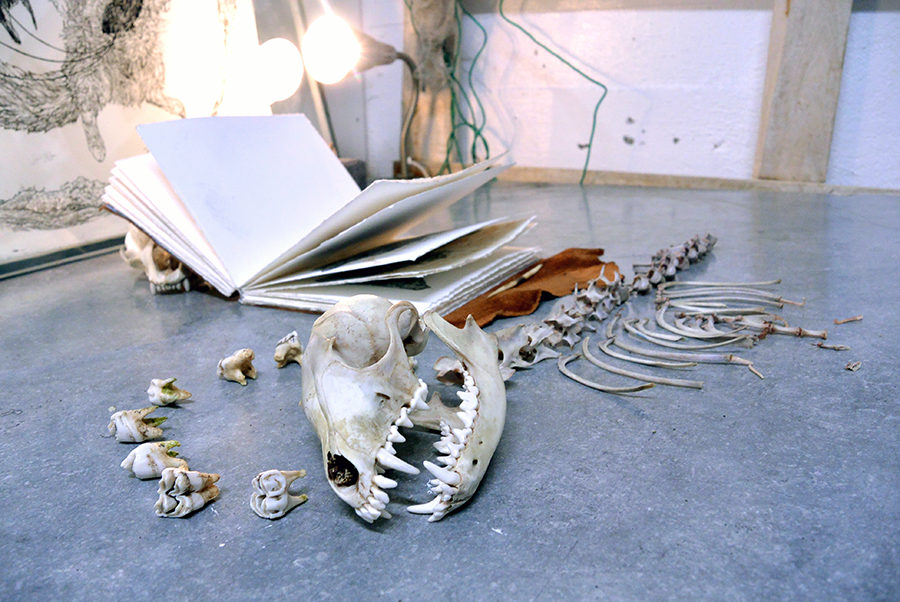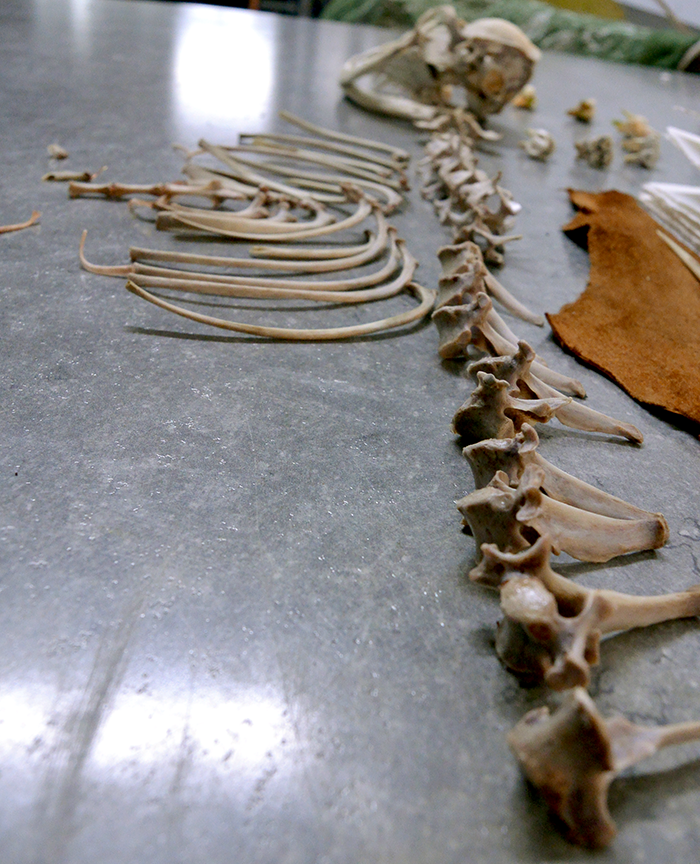So my time in Iceland ended with the month of March and I've shipped off to the Faroe Islands for the next few weeks as a participant in the 'Arctis Exchange', an artist exchange that takes place between the Faroe Islands and the US. I arrived in Torshavn on the first and I've just been settling in with my host family and starting some new projects. I've got a bad cold at the moment, something Joel--the man who runs the Arctis Exchange--claims is a result of the high humidity here, but after living a hop and skip from the sea in Skagaströnd I think this illness is just a culmination of all the stress from finishing up my work in Iceland.
I took some photos of my final installation for the open house. I finally cleaned off the last of the bones that I wanted to keep from the dead fox I recieved from a local hunter. I pulled reindeer teeth out of a spare skull in the studio and circled them around the fox skull like a halo because foxes in Svalbard and greenland that scavenge on caribou are protected from oceanic pollulants because of their inland diet. There was a scientific article where I read about this recently and I hope to do a small clayboard or screenprint piece on the subject when I have time.
It was a little bittersweet seeming him laid out like that and I think the full impact of my time in Iceland won't really sink in until I return to North America.
The big piece in the background is the final design for the key layer of a print based on the cycle of mercury contamination that afflicts the arctic fox's foodchain along the coast. Mercury (Hg) ends up in the ocean via airborne mercury from coal-fired power plants and is one of the pollutants that biomagnifies up the foodchain, meaning that at the top of the foodchain--i.e. at the higher trophic levels--the mercury levels are much higher than at the bottom of the foodchain. Mercury can have negative impacts on the development of a fetus because it's able to cross the placental barrier and it can cause neurodegeneration because of its ability to cross the blood brain barrier and enter the brain. Neurological effects of a substance are difficult to measure in wild animals but in arctic foxes the mercury levels in certain areas (such as on Mednyi Island) have been bad enough to visibly affect the quality of their fur, which is vital for winter survival.
The article that largely inspired this piece can be found here.
The coastal birds that these foxes eat represent a prominent source of mercury in their diet, being victims of biomagnification themselves. In this image, I depicted some of the bird species that the scientific literature deems affected by oceanic mercury. In order of size (smallest to largest) they are: the Little Auk, Razorbill and Common Murre (or guillemot). The fish jumping free of the netting is a young cod, and I included it as a nod to the fact that the threats to this foodchain are also a threat to the local fisheries that provide the food we consume.
